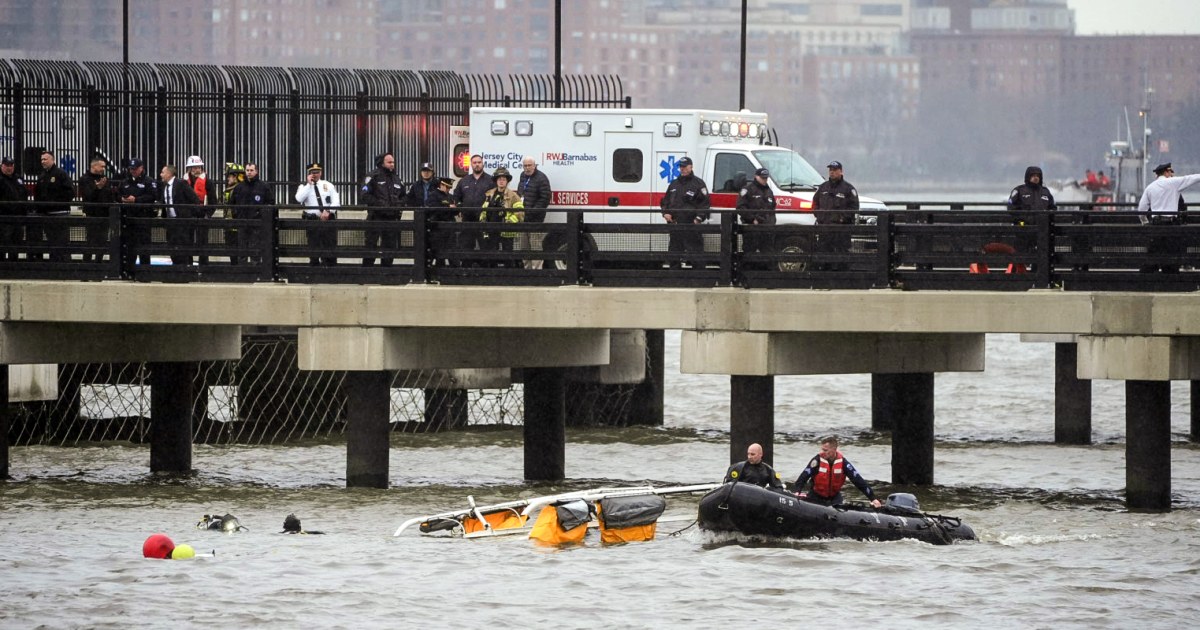Interview between Adonis Violaris of CSN and Osher Perry, CEO and Founder, ShipIn Systems
Can you provide an overview of ShipIn’s mission and core focus within the maritime industry, particularly in the context of maritime safety following the Dali incident?
Our mission is to equip seafarers with advanced tools to do their jobs in a safer and more productive manner.
The maritime industry remains beset with major incidents. As an industry, it has implemented regulations, training, audits, procedures, and processes, and yet, these have not been matched by the deployment of technology to improve safety as seen in aviation. This is a huge deficiency – and a vulnerability – in the industry’s approach to risk reduction, loss prevention and accident investigation. In addition to making clear commercial sense to mitigate risk, the industry has a moral obligation to do better.
Whilst the Dali incident in Baltimore remains under investigation, it has highlighted that shipping’s failures are hiding in plain sight. This incident can be a watershed moment that inspires the industry to challenge operational ‘norms’ and raise safety standards to reflect those in more stringent industries like aviation.
It is time to challenge convention and promote the adoption of available technology, shifting the industry’s mentality from an analogue to a digital state of mind. At ShipIn, we’re working to significantly reduce maritime accidents, injuries, fatalities, and financial losses, ultimately driving the industry towards a safer, more transparent, and more efficient future.

What key features and benefits does ShipIn offer to enhance maritime safety, and how do these address the lessons learned from the Dali incident?
No other industry has so little transparency between the asset and decision makers, or such a gulf between the ownership and operational control of the asset. Far better alignment is needed.
Currently, a large portion of the international shipping fleet lacks a validation system to track and confirm adherence to proper onboard processes and procedures. This absence of checks and balances compromises safety standards and can inadvertently incentivise unsafe behaviours among crew and ship managers.
Considering the substantial costs associated with operational downtime for vessels like the Dali (approximately $50-$60K per day), there is a reluctance to incur losses due to inadvertent seaworthiness issues. Captains and crews require better tools to assess equipment maintenance and operations and to seamlessly share data with shore-based colleagues or third parties, enabling informed safety decisions.
Technological advancements, such as ShipIn’s FleetVision™ platform, offers a solution by continuously analysing shipboard operations, including bridge activities, thereby enhancing transparency and facilitating swift responses to mitigate onboard risks. AI-powered CCTV monitoring provides real-time alerts on safety and maintenance concerns, ensuring issues are promptly addressed and not overlooked by managers or owners, thereby safeguarding crews.
By enabling seamless communication and real-time data sharing between ships and shore, ShipIn promotes a culture of accountability. This facilitates informed decision-making and timely intervention, ultimately preventing incidents that could otherwise occur due to delayed responses or insufficient information transfer.
How is ShipIn leveraging real-time data and communication to prevent maritime accidents, and how do you ensure the reliability and security of your technology solutions?
Our AI systems are integrated with CCTV feeds onboard, and proactively alerts shipowners, managers, and seafarers to onboard events in real-time. This approach contrasts with traditional post-incident investigation methods, significantly reducing anomalies and enhancing crew interaction with safety protocols.
We’ve observed an initial reduction of over 40% in incidents onboard vessels since implementing our systems. Currently, we process more than 2 billion frames of operations daily, generating over 40,000 events across our fleet of 700 vessels. Post-installation, we found an average of 439 safety violations per month per vessel, illustrating the frequent risks to crew and vessel safety. This equates to the crew putting themselves and the vessel in danger 12 times a day.
Research by Bureau Veritas and London P&I Club reveals that 29% of propulsion losses stem from insufficient maintenance, and 24% from human error. Over two-thirds of these incidents could be avoided with modern technology on vessels. This parallels advancements in other industries, where performance management tools significantly enhance operational safety and efficiency.
To ensure reliability, our system employs robust machine learning algorithms trained on extensive datasets to accurately detect anomalies, all while minimising bandwidth consumption for uninterrupted communication. Security is paramount; we employ advanced encryption methods and secure communication protocols to safeguard data integrity and privacy. We adhere rigorously to industry best practices and collaborate closely with cybersecurity experts to uphold the integrity of our systems.

What role does collaboration with maritime authorities, shipowners, and other industry stakeholders play in ShipIn’s strategy for improving maritime safety?
Collaboration with maritime authorities, shipowners, and other industry stakeholders is pivotal to ShipIn’s strategy for enhancing maritime safety. We recognise that improving safety in shipping requires concerted efforts across the board and we advocate for the implementation of stricter safety standards, aiming to close existing gaps and align with stringent safety regulations akin to those in other high-risk sectors.
By engaging with shipowners and industry stakeholders, we ensure our solutions not only meet regulatory requirements but also align with operational needs and industry standards. Through these partnerships, we gain crucial insights into industry challenges, enabling us to tailor our technology effectively. By sharing insights and data with stakeholders, we enable informed decision-making and contribute to a safer operational environment.
Working together with industry leaders, we demonstrate the tangible benefits of adopting advanced technologies. Partnerships with major ship management companies underscore significant reductions in incidents and operational enhancements achieved through our innovations.
Beyond technology, collaboration facilitates a cultural shift towards prioritising safety. Through partnerships that promote continuous improvement and proactive risk management, we aim to instil a safety-first mindset. This includes addressing training needs and promoting best practices that leverage technologies such as AI and machine learning for enhanced operational safety.
Can you share a success story or significant project where your technology had a notable impact on enhancing maritime safety?
Our technology has significantly enhanced maritime safety through impactful partnerships with industry leaders like Interunity Group, Laskaridis Shipping, and ZEABORN Ship Management. For instance, by implementing our advanced FleetVision™ platform, Interunity Group achieved zero lapses in compliance with its Navigational Policies, setting a new standard for safety across their operations. Similarly, Laskaridis Shipping, the first Greek ship owner to implement FleetVision™, established real-time ship-shore collaboration, proactively mitigating risks and achieving operational excellence. Meanwhile, ZEABORN Ship Management’s adoption of FleetVision™ bolstered transparency and security across their fleet, ensuring safer operations and superior outcomes.
One standout success story involves a tanker company that, after experiencing recurrent navigational incidents, partnered with us and implemented FleetVision™. This led to the identification and rectification of lapses in bridge watchkeeping practices, drastically reducing “unattended bridge” alerts and elevating navigational safety fleet-wide. Additionally, a chemical tanker avoided substantial damages by utilising our platform to deliver undisputed digital evidence of proper sampling during loading, streamlining claims procedures and preventing an $800,000 loss.
These achievements underscore our commitment to transforming safety culture and operational efficiency within the maritime sector. FleetVision™ not only minimises incidents but also provides tangible financial benefits and operational enhancements. By empowering captains and crews to self-assess and improve performance, our technology contributes to significant annual savings – estimated at over $1.87m per fleet of 30 vessels, per year – and fosters a proactive approach to accident prevention and investigation.

What are the main challenges in maritime safety that ShipIn observes, and how is your company positioned to address these challenges while continuing to innovate in maritime safety technology?
The main challenges in maritime safety that we see include the industry’s under-deployment of available technologies, the increasing size and complexity of vessels, and the persistent issues of insufficient maintenance, human error, and a lack of transparency between ship and shore operations.
The Dali accident in Baltimore exemplifies the dangers of relying on traditional practices without leveraging technology to prevent such incidents. The mismatch between the rapid increase in vessel size and the stagnation in safety tools and systems is a core issue. Ships have grown significantly in size over the decades, adding new machinery and fuels, and facing more stringent regulatory, environmental, and security requirements. This increased workload on already stretched and shrinking crews is unsustainable, as most are overwhelmed with cargo operations, maintenance, and extensive reporting requirements, highlighting the necessity for advanced safety tools and systems.
ShipIn addresses these challenges by leveraging advanced technologies like computer vision, predictive analysis, AI, and real-time alerts to identify potential risks before they escalate, ensuring timely intervention. Our technology empowers crews to handle the increasing demands of modern vessels, helping them excel in their profession and return safely to their families.
Furthermore, FleetVision™ helps ship operators maintain their vessels more effectively, reducing the likelihood of failures through early hazard detection and immediate notification. By uncovering flawed practices and overlooked protocols, such as insufficient watchkeeping, PPE lapses, and irregular maintenance, our technology not only prevents accidents but also helps in understanding root causes and learning lessons to avoid future incidents.
What are ShipIn’s long-term goals for the maritime industry, and how do you envision the role of technology in shaping the future of maritime safety?
ShipIn’s long-term goals for the maritime industry are centred around enhancing safety, reducing accidents, and optimising operational efficiency. We aim to achieve a future where maritime safety is significantly bolstered through the widespread adoption of advanced technologies. Similar to high-risk industries like aviation, we envision a landscape where these technologies become standard practice, enabling proactive risk management and swift response to potential hazards.
Our commitment lies in setting a new benchmark for maritime safety, integrating technology into daily operations. AI and real-time data analysis are instrumental in empowering crews to pre-emptively identify risks and implement mitigating measures effectively. By instilling a culture that values safety and embraces technological innovation, ShipIn aims to not only minimise incidents but also protect lives and assets across the maritime sector.








